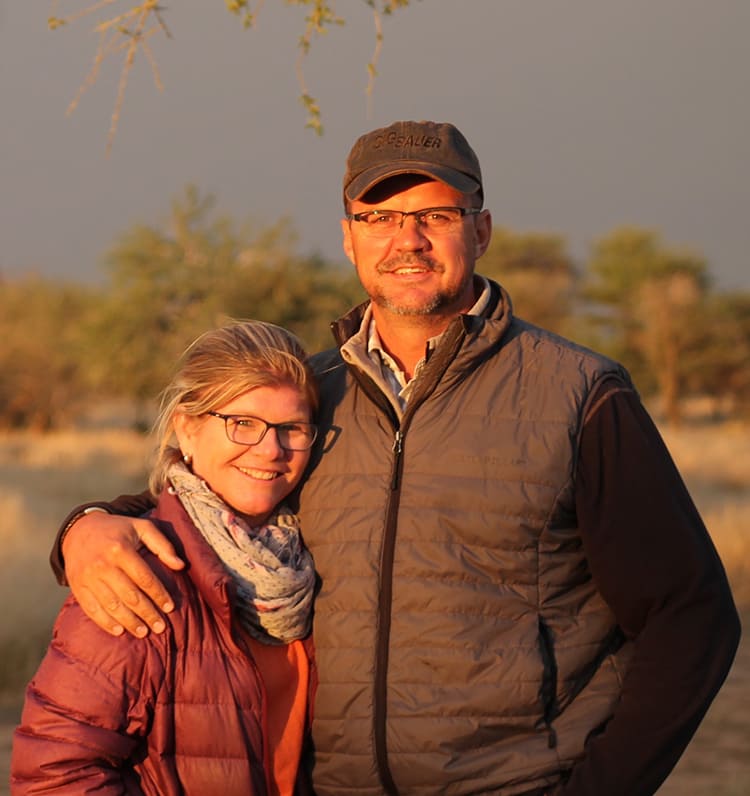- Ready for a unique experience?
- +264 (0)81 259 9660
- andre@eitaalo.com
What to Expect in Namibia
Namibia means “a place of great arid plains” and encompasses a varied and stunning landscape. From the subtropical, lush waterways of the Okavango, Zambezi, and Kunene rivers in the north, to the arid, scorched gravel plains surrounding the Fish River Canyon in the south, from the Kalahari savannah plains in the east to the Namib Desert in the west, Namibia offers unparalleled natural beauty found nowhere else in the world.
As one of the most sparsely populated countries globally, Namibia has approximately 2.2 million inhabitants spread across roughly 800,000 square kilometers. This is one of Namibia’s key attractions—providing visitors with the chance to experience the vastness of Africa, all while benefiting from modern infrastructure and accessible medical services.
Namibia boasts excellent infrastructure, including well-maintained tarmac and gravel roads, first-class medical facilities in Windhoek and larger towns, reliable telecommunications with global connectivity, and top-quality lodges and tourist attractions.
International flight connections are available via Hosea Kutako International Airport, with flights from Germany or South Africa providing access to destinations worldwide.
The climate ranges from mild in winter to hot in summer. Winter temperatures average from 0°C in the early morning to 24°C at midday. In summer, temperatures range from an average of 12°C in the morning to 33°C at midday. The consistently low humidity throughout the year makes even the hottest midday temperatures bearable.
Namibia’s rainy season runs from late January to the end of April, with rainfall ranging from as little as 20 mm in the desert to over 1,000 mm in the subtropical northern regions. Central Namibia typically receives between 250 and 350 mm of rain annually.
Namibia is renowned for its wildlife, vast open spaces, and numerous tourist attractions.
Etosha National Park, located in the northern part of the country, showcases typical Namibian wildlife, including the Big Five, with the exception of the Cape buffalo. The park is home to over 100 mammal species and more than 300 bird species.
Sossusvlei, located southwest of Windhoek, is a pan formed by a perennial river that flows into the desert, creating a pan before disappearing beneath the sand dunes. This is one of the biggest tourist attractions in the Namib Desert. The massive red dunes, some reaching up to 300 meters in height, offer an unforgettable sight at sunrise or sunset. The most remarkable experience is witnessing Sossusvlei, a pan, fill with water during the rainy season.
Swakopmund, a town from Namibia’s early German colonial era, and Walvis Bay, a deep-sea harbor, serve as the hub for various activities. Scenic flights along the coast, quad biking in the dunes, dolphin cruises, shark fishing, surf and boat fishing trips, and nature excursions into the Namib Desert are just a few of the activities offered along the coast.
Caprivi, a narrow strip of land in the far northeast of Namibia, is approximately 400 km long and borders Angola, Zambia, Botswana, and Zimbabwe. It falls within the tropical climate zone and receives the highest rainfall in Namibia between December and March.
Major rivers such as the Kavango, Kwando, and Zambezi flow through this region. The Caprivi offers a magical journey through diverse cultures, abundant birdlife, mammals, and unique flora.

If you want to book a photo safari with us or have any other questions, please fill out the form below.
We’ll get back to you as soon as possible.

NRA Great American Outdoor Show, Harrisburg
Please come and visit Andre:
Where: Pennsylvania Farm Show Complex,
2300 North Cameron Street
Harrisburg, PA, 17110, USA
When: 1 – 9 Feb 2025
Booth: 5914